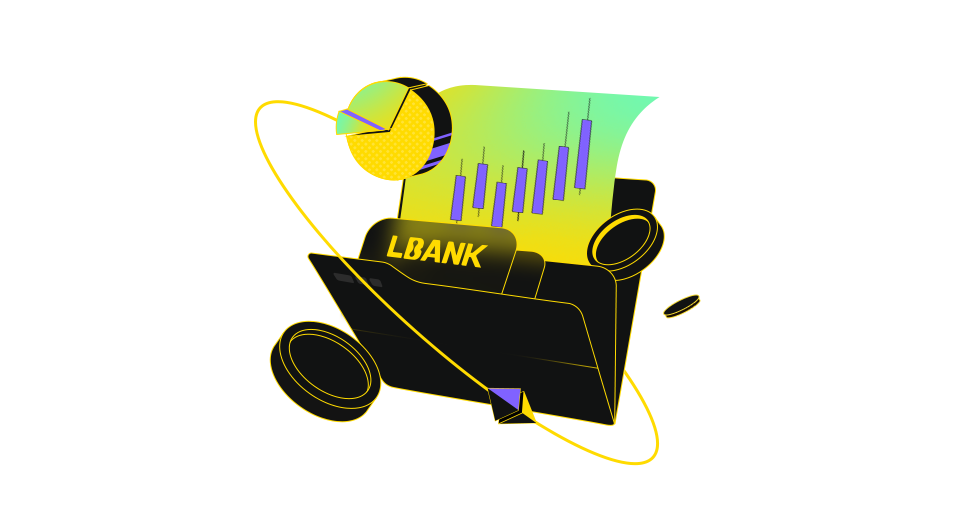"Understanding WalletConnect: A Beginner's Guide to Seamless Crypto Wallet Integration."
What is WalletConnect (WCT)?
WalletConnect (WCT) is a decentralized protocol designed to bridge the gap between blockchain wallets and decentralized applications (dApps). It simplifies the process of connecting wallets to dApps, enabling users to interact seamlessly with the decentralized web without the hassle of manual address entry or complex setups. As the adoption of decentralized finance (DeFi) and non-fungible tokens (NFTs) grows, WalletConnect has emerged as a critical tool for enhancing user experience and security in the blockchain ecosystem.
### The Need for WalletConnect
Traditional methods of connecting wallets to dApps often involve copying and pasting long wallet addresses or scanning QR codes, which can be error-prone and inconvenient. WalletConnect addresses these challenges by providing a standardized, secure, and user-friendly way for wallets and dApps to communicate. This protocol eliminates the need for users to share private keys or sensitive information, ensuring a safer and more streamlined experience.
### How WalletConnect Works
WalletConnect operates through a simple yet powerful mechanism:
1. **Connection Initiation**: A user opens a dApp and selects the option to connect their wallet via WalletConnect. The dApp generates a QR code or a deep link.
2. **Wallet Pairing**: The user scans the QR code or clicks the link using their WalletConnect-compatible wallet (e.g., MetaMask, Trust Wallet). This establishes a secure connection between the wallet and the dApp.
3. **Secure Communication**: Once paired, the wallet and dApp communicate in real-time using WebSockets, with all data encrypted end-to-end. Users can approve transactions or interact with the dApp directly from their wallet interface.
4. **Multi-Chain Support**: WalletConnect supports multiple blockchain networks, including Ethereum, Binance Smart Chain, Solana, and Polkadot, making it versatile for users across different ecosystems.
### Key Features of WalletConnect
1. **Decentralized and Open-Source**: WalletConnect is built as an open-source protocol, allowing developers to contribute, audit, and improve its functionality. This transparency fosters trust and innovation within the community.
2. **End-to-End Encryption**: All communications between the wallet and dApp are encrypted, ensuring that sensitive data like transaction details remain private.
3. **No Server Dependency**: WalletConnect does not rely on centralized servers to store user data. Private keys and sensitive information stay within the user’s wallet, reducing the risk of hacks or breaches.
4. **Cross-Platform Compatibility**: The protocol works across mobile and desktop environments, supporting a wide range of wallets and dApps.
### Security and Risks
While WalletConnect is designed with robust security measures, no system is entirely risk-free. Potential vulnerabilities could arise from:
- **Phishing Attacks**: Malicious dApps might attempt to trick users into approving harmful transactions.
- **Implementation Flaws**: Bugs in wallet or dApp integrations could expose weaknesses.
- **Network Vulnerabilities**: Issues with WebSocket connections or encryption protocols could be exploited.
To mitigate these risks, WalletConnect undergoes regular security audits, and users are advised to verify the authenticity of dApps before connecting their wallets.
### Recent Developments and Future Outlook
Since its launch in 2018, WalletConnect has evolved significantly:
- **2018-2020**: Gained traction as DeFi exploded in popularity, becoming a go-to solution for wallet-dApp interactions.
- **2021-2022**: Expanded support to newer blockchains like Solana and Polkadot, broadening its usability.
- **2023**: Continued integrations with major wallets and dApps, alongside enhanced security features.
Looking ahead, WalletConnect aims to further streamline cross-chain interactions and improve scalability to accommodate the growing demand for decentralized applications.
### Conclusion
WalletConnect is a foundational protocol in the blockchain space, enabling secure and effortless connections between wallets and dApps. Its open-source nature, strong encryption, and multi-chain support make it a preferred choice for users and developers alike. As the decentralized web continues to expand, WalletConnect’s role in fostering interoperability and user accessibility will remain pivotal. However, maintaining its edge will require ongoing innovation and vigilance against emerging security threats and competitive solutions.
For anyone navigating the world of DeFi, NFTs, or dApps, WalletConnect offers a reliable and efficient way to stay connected—safely and seamlessly.
WalletConnect (WCT) is a decentralized protocol designed to bridge the gap between blockchain wallets and decentralized applications (dApps). It simplifies the process of connecting wallets to dApps, enabling users to interact seamlessly with the decentralized web without the hassle of manual address entry or complex setups. As the adoption of decentralized finance (DeFi) and non-fungible tokens (NFTs) grows, WalletConnect has emerged as a critical tool for enhancing user experience and security in the blockchain ecosystem.
### The Need for WalletConnect
Traditional methods of connecting wallets to dApps often involve copying and pasting long wallet addresses or scanning QR codes, which can be error-prone and inconvenient. WalletConnect addresses these challenges by providing a standardized, secure, and user-friendly way for wallets and dApps to communicate. This protocol eliminates the need for users to share private keys or sensitive information, ensuring a safer and more streamlined experience.
### How WalletConnect Works
WalletConnect operates through a simple yet powerful mechanism:
1. **Connection Initiation**: A user opens a dApp and selects the option to connect their wallet via WalletConnect. The dApp generates a QR code or a deep link.
2. **Wallet Pairing**: The user scans the QR code or clicks the link using their WalletConnect-compatible wallet (e.g., MetaMask, Trust Wallet). This establishes a secure connection between the wallet and the dApp.
3. **Secure Communication**: Once paired, the wallet and dApp communicate in real-time using WebSockets, with all data encrypted end-to-end. Users can approve transactions or interact with the dApp directly from their wallet interface.
4. **Multi-Chain Support**: WalletConnect supports multiple blockchain networks, including Ethereum, Binance Smart Chain, Solana, and Polkadot, making it versatile for users across different ecosystems.
### Key Features of WalletConnect
1. **Decentralized and Open-Source**: WalletConnect is built as an open-source protocol, allowing developers to contribute, audit, and improve its functionality. This transparency fosters trust and innovation within the community.
2. **End-to-End Encryption**: All communications between the wallet and dApp are encrypted, ensuring that sensitive data like transaction details remain private.
3. **No Server Dependency**: WalletConnect does not rely on centralized servers to store user data. Private keys and sensitive information stay within the user’s wallet, reducing the risk of hacks or breaches.
4. **Cross-Platform Compatibility**: The protocol works across mobile and desktop environments, supporting a wide range of wallets and dApps.
### Security and Risks
While WalletConnect is designed with robust security measures, no system is entirely risk-free. Potential vulnerabilities could arise from:
- **Phishing Attacks**: Malicious dApps might attempt to trick users into approving harmful transactions.
- **Implementation Flaws**: Bugs in wallet or dApp integrations could expose weaknesses.
- **Network Vulnerabilities**: Issues with WebSocket connections or encryption protocols could be exploited.
To mitigate these risks, WalletConnect undergoes regular security audits, and users are advised to verify the authenticity of dApps before connecting their wallets.
### Recent Developments and Future Outlook
Since its launch in 2018, WalletConnect has evolved significantly:
- **2018-2020**: Gained traction as DeFi exploded in popularity, becoming a go-to solution for wallet-dApp interactions.
- **2021-2022**: Expanded support to newer blockchains like Solana and Polkadot, broadening its usability.
- **2023**: Continued integrations with major wallets and dApps, alongside enhanced security features.
Looking ahead, WalletConnect aims to further streamline cross-chain interactions and improve scalability to accommodate the growing demand for decentralized applications.
### Conclusion
WalletConnect is a foundational protocol in the blockchain space, enabling secure and effortless connections between wallets and dApps. Its open-source nature, strong encryption, and multi-chain support make it a preferred choice for users and developers alike. As the decentralized web continues to expand, WalletConnect’s role in fostering interoperability and user accessibility will remain pivotal. However, maintaining its edge will require ongoing innovation and vigilance against emerging security threats and competitive solutions.
For anyone navigating the world of DeFi, NFTs, or dApps, WalletConnect offers a reliable and efficient way to stay connected—safely and seamlessly.
Related Articles
How are RWAs different from traditional financial assets?
2025-05-22 10:16:47
How does DeFi differ from traditional finance systems?
2025-05-22 10:16:47
Can you elaborate on how equitable distribution is achieved in the new tokenomic model?
2025-05-22 10:16:46
What implications does this collaboration have for blockchain gaming acceptance?
2025-05-22 10:16:46
How does U.S. Steel Corporation's performance compare to its competitors in light of the new price target?
2025-05-22 10:16:46
Are there fees associated with different deposit methods on Binance?
2025-05-22 10:16:45
How complex are DeFi protocols involved in yield farming as mentioned in the research news about CoinGecko's Earn Platform?
2025-05-22 10:16:45
How important does Buterin consider institutional adoption of cryptocurrencies?
2025-05-22 10:16:45
What types of insights or findings should be highlighted during the analysis of news articles?
2025-05-22 10:16:44
What role do stablecoins play in facilitating transactions within the cryptocurrency ecosystem?
2025-05-22 10:16:44
Latest Articles
How does DeFi differ from traditional finance systems?
2025-05-22 10:16:47
How are RWAs different from traditional financial assets?
2025-05-22 10:16:47
Can you elaborate on how equitable distribution is achieved in the new tokenomic model?
2025-05-22 10:16:46
What implications does this collaboration have for blockchain gaming acceptance?
2025-05-22 10:16:46
How does U.S. Steel Corporation's performance compare to its competitors in light of the new price target?
2025-05-22 10:16:46
How complex are DeFi protocols involved in yield farming as mentioned in the research news about CoinGecko's Earn Platform?
2025-05-22 10:16:45
Are there fees associated with different deposit methods on Binance?
2025-05-22 10:16:45
How important does Buterin consider institutional adoption of cryptocurrencies?
2025-05-22 10:16:45
What is Mashinsky's perspective on the role of self-regulation within the crypto industry?
2025-05-22 10:16:44
What role do stablecoins play in facilitating transactions within the cryptocurrency ecosystem?
2025-05-22 10:16:44
Hot Topics
Technical Analysis

1606 Articles
DeFi

90 Articles
MEME

62 Articles
Cryptocurrency Rankings
Top
New Spot
Expand
Fear and Greed Index
Reminder: Data is for Reference Only
73
Greed





